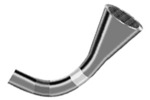- ▶
- Heaters/Source
- ▶
- Agilent Heaters and SensorsMass Spectrometry, Scientific Supplies & ManufacturingScientific Instrument Services 5973 Source Heater Tamper Resistant Allen Wrench 5973/5975 Quad Sensor 5985 Source Heater Assembly Agilent Interface Heater Assembly 5971 Interface Heater

- ▶
- MultipliersAgilent/HP Amptek Anelva Bear BioRad/Ciphergen Bruker Cameca Comstock CVC 1100 Dune DuPont Extrel FEI GBC Griffin Hiden Hitachi Inficon(Balzers/Leybold) JEOL LKB Mass Analyzer Products Mass Sensors McCallister Nermag Nu Inst Orbital Omicron PerkinElmer Riber Sciex/AB Seiko Sensar Shimadzu (Kratos) Standford Teledyne Thermo/Finnigan Ulvac UTI/MKS Vacuum Tech Varian Vestec Viking Waters/Micromass/VG Generic Catalog Page A40 Catalog Page A41 Catalog Page A42 Catalog Page A43 Catalog Page A36

- LiteratureApplication Notes Adsorbent Resins Guide Mass Spec Tips SDS Sheets FAQ MS Calibration Compound Spectra Manuals MS Links/Labs/ Organizations MS Online Tools Flyers on Products/Services Scientific Supplies Catalog About Us NextAdvance Bullet Blender® Homogenizer Protocols Micro-Mesh® Literature Instrumentation Literature Agilent GC/MS Literature SIS News / E-Mail Newsletter NIST MS Database - Update Notifications

- ▶
- Mass Spec Tips1 - Freon for use in Mass Spectrometer Leak Checking 2 - Mass Spectrometer Probe Cooling 3 - Sample Vials for Direct Probes 4 - Selection of Vacuum Pump Oils for Lowest Mass Spec Background 5 - Determination Linkages in Biomolecules of Disulfide 6 - Transfer of H.P. ChemStation MS and GC Chromatograms from PC to MAC Computer 7 - Repairing Clogged Thermospray Probes 8 - Tuning a Finnigan 5100 to Meet BFB or DFTPP Criteria 9 - H.P. 5971 Transfer Line Tip for Direct Introduction of Capillary Column 10 - Troubleshooting Finnigan 5100 GC/MS Systems 11 - Leak Checking Mass Spectrometers 12 - Elimination of Memory Peaks and GC Background Noise 13 - SuperIncos Mapped Software Print Buffer Lockup 14 - Reduction of Peak Tailing 15 - Electron Multiplier Sensitivity 16 - INCOS Procedure for Calibrating on the Finnigan 4500 17 - Extending Electron Multiplier Life 18 - What techniques or methods do you use to determine if the electron multiplier 19- What techniques or methods do you use to detect vacuum leaks in your mass spectrometer 20 - Extending Lenear Range of the Mass Spec Article - Improving Sensitivity in the HP 5971 Mass Spectrometer - Part 1 and Part 2

- ▶
- 20 - Extending Lenear Range of the Mass Spec (This Page)
 Mass Spec Tips is a collection of tips relating to the operation
and service of mass spectrometers. Some of these Tips have been
reported in our newsletter, "The Mass Spec Source."
If you have a question relating to the operation or service of
mass spectrometers or would like to add your comments to the below
tip and would like to have it included in this forum, please contact us.
Input to this database of MS Tips is needed from our readers
to complete this section.
Mass Spec Tips is a collection of tips relating to the operation
and service of mass spectrometers. Some of these Tips have been
reported in our newsletter, "The Mass Spec Source."
If you have a question relating to the operation or service of
mass spectrometers or would like to add your comments to the below
tip and would like to have it included in this forum, please contact us.
Input to this database of MS Tips is needed from our readers
to complete this section.
by: James B. Edwards
Affiliation: Enviroscan Corp.
As a principally environmental laboratory, my company does primarily target compound analysis using standard EPA methodologies. We use a Finnigan INCOS 50B with a CTC A200S autosampler for semi-volatiles, and a Finnigan ITS-40 with Tekmar LSC200/ALS2016 for volatiles. As such, the primary concern is low concentration sensitivity, and any concentrations above the calibrated linear range can be determined by simple dilution.
However, my company is also associated with a wastewater treatment technology firm that has a wide variety of analytical needs. In particular, we provide analyses which look for high concentrations of compounds in the raw waste to be treated, and (hopefully), low concentrations of the same compounds in the treated effluent samples. In order to avoid multiple dilutions for the varying treatment conditions attempted, one technique that we use involves the monitoring of a target compound using several different quantitation ions.
For example, in one study, we were monitoring for the presence and concentration of 1,4-dichlorobenzene. This compound gives a base peak of 146 m/z, with other chlorine cluster masses of 148 m/z (approximately 60% base peak) and 150 m/z (approximately 10% base peak). We set up our quantitation package to search for 1,4-dichlorobenzene in two entries. The first entry monitored m/z 146 and the second monitored m/z 150. By running the calibration curves were prepared, one using each m/z. the first entry was used for high sensitivity, as m/z 146 is the base peak. The second entry was used for extended calibrated range - since m/z 150 is approximately 10 percent of m/z 146, the calibrated range using m/z 150 was approximately one order of magnitude higher than when using m/z 146 (although it did not have the maximum low end sensitivity). The two m/z, when monitored in this fashion, will also provide a check on one another when analyzing mid-level concentration samples.
By using one mass for maximum sensitivity (normally the base peak) and one mass for the highest possible calibrated range, the effective calibrated range can be extended. This only requires the selection of a secondary m/z that is structurally/spectrally significant for the target compound, and one that is present in the mass spectrum at a high enough percentage as to avoid resolution problems.

